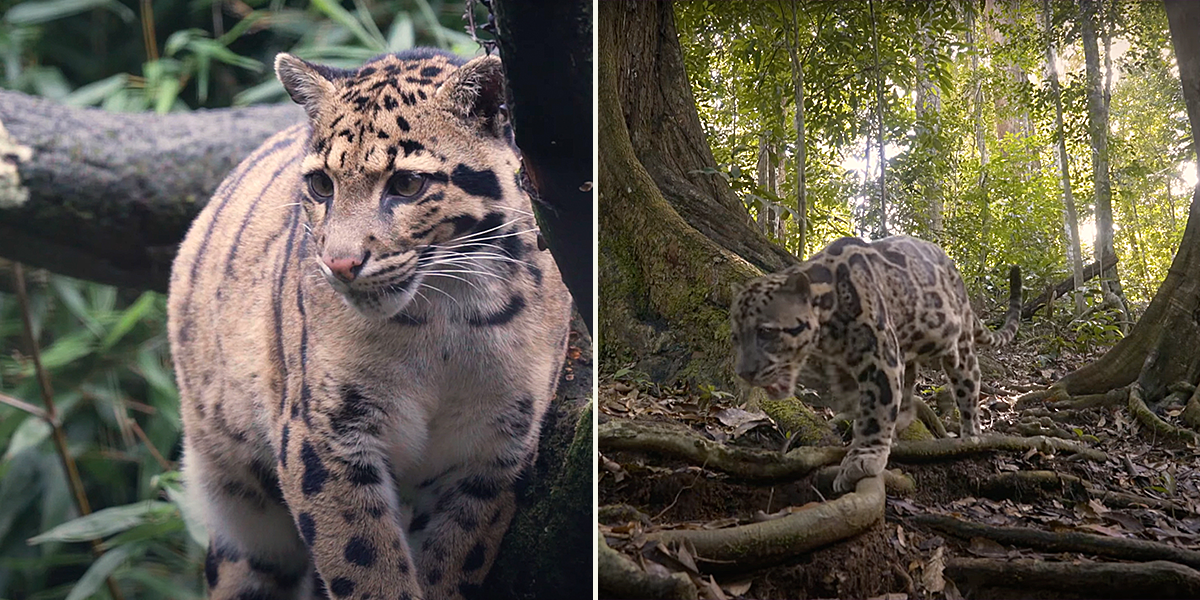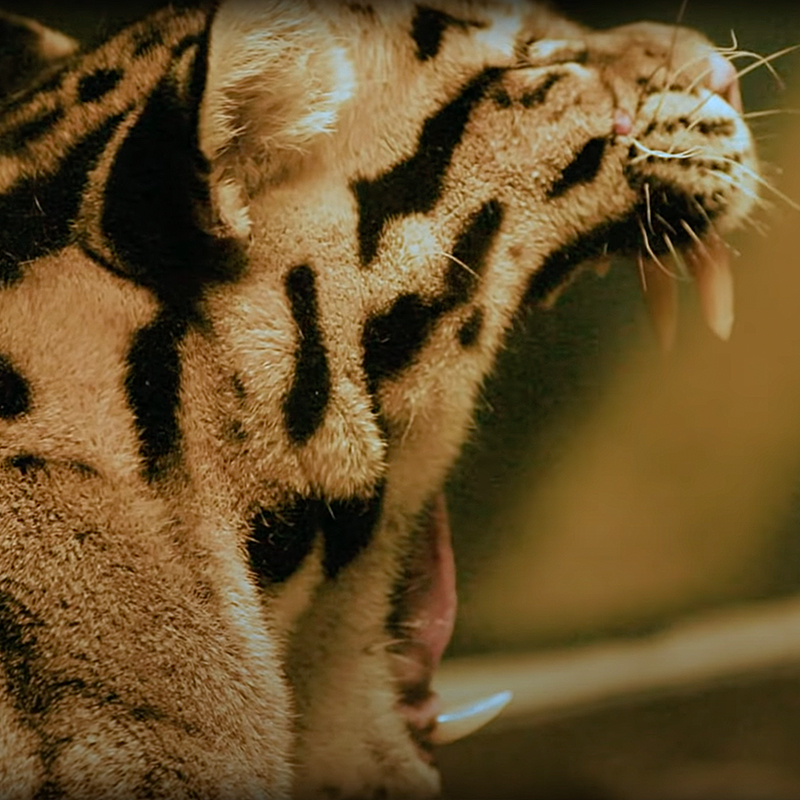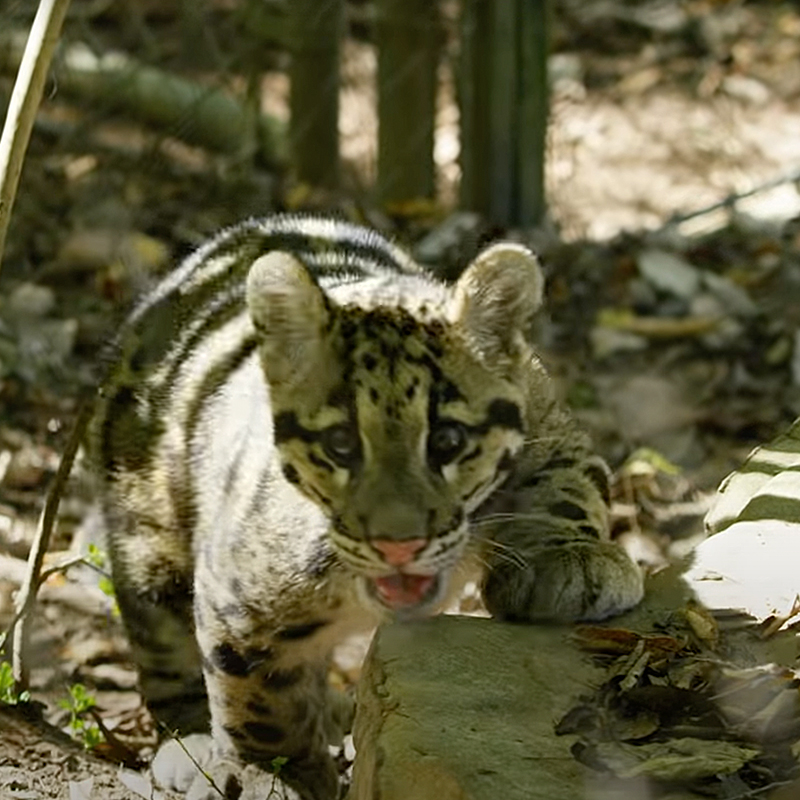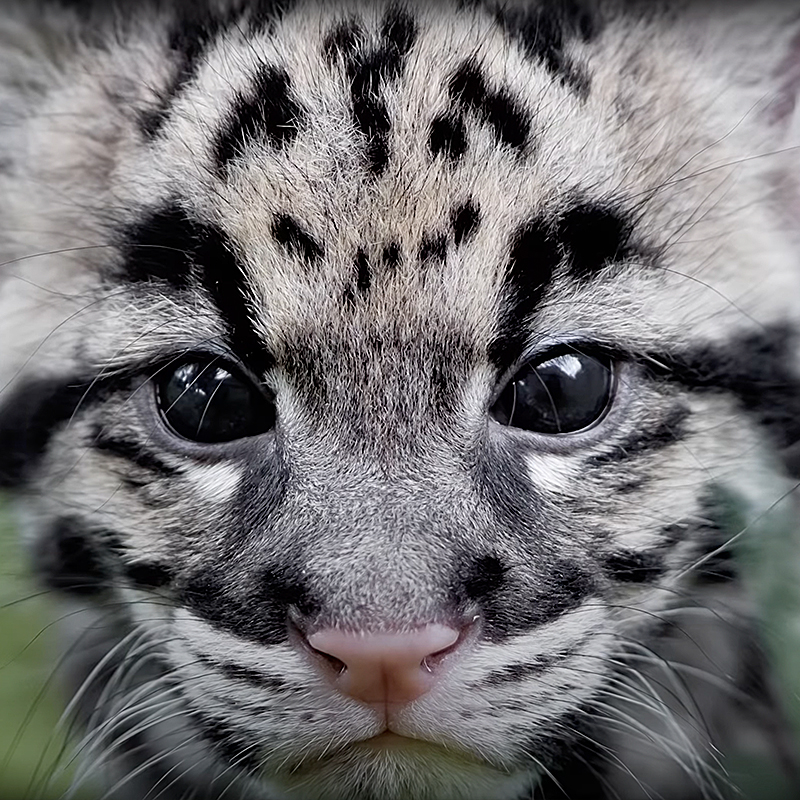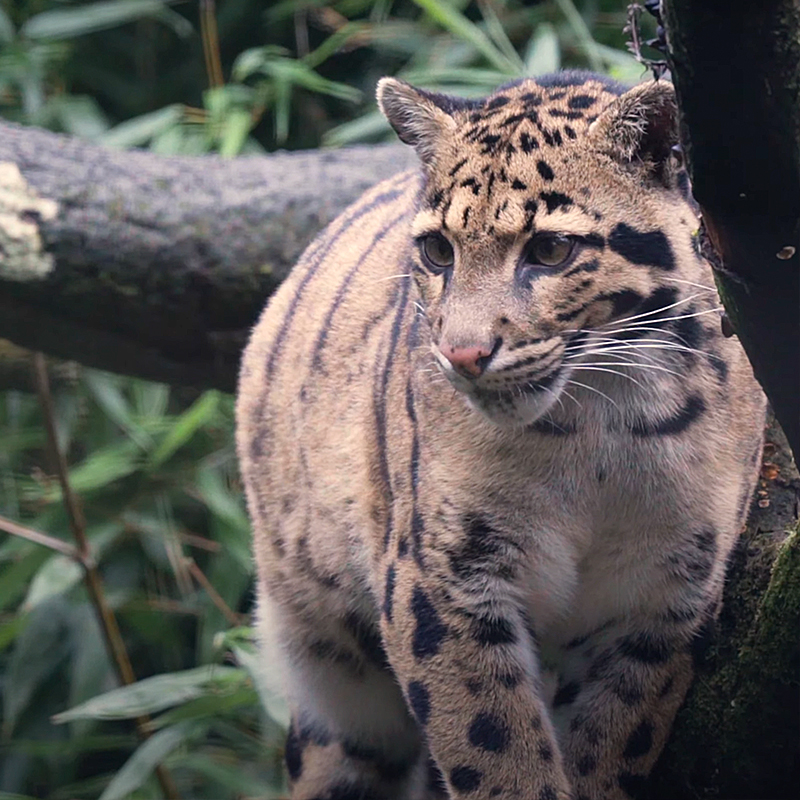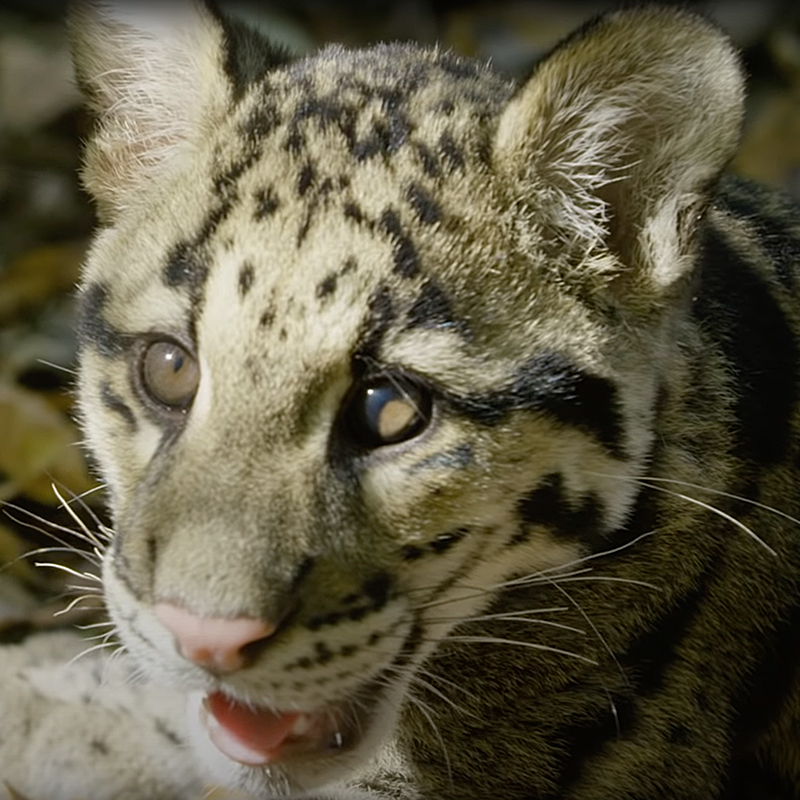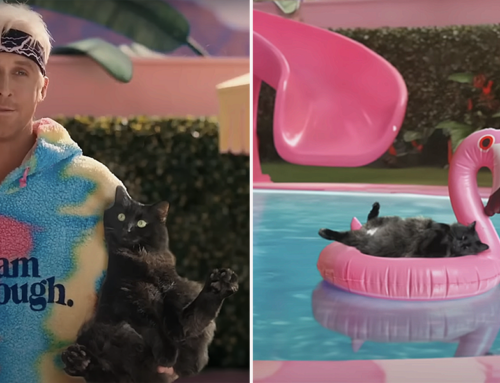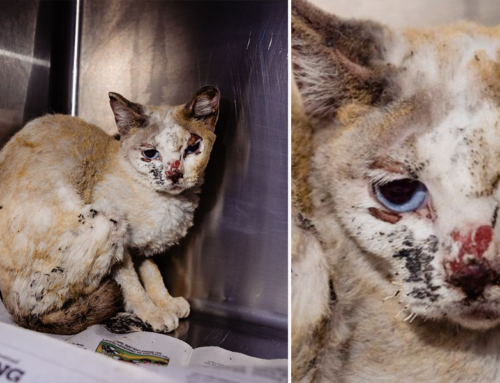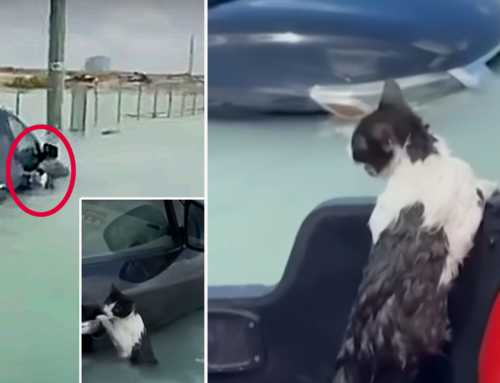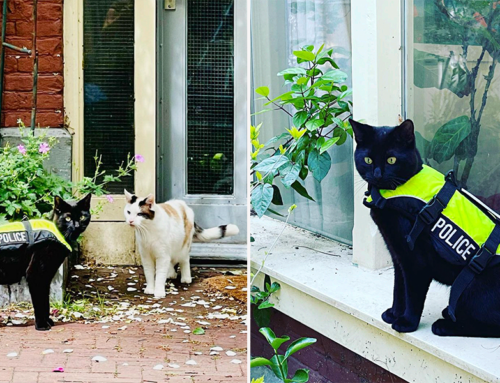For cat lovers, the chance to see Clouded Leopards running free in the wild would be an ultimate bucket list wish. But fulfilling that wish would be a tall order. These “small big cats” remain among the least well-known of all felines, with one species only recently discovered. Both species are listed as vulnerable by the International Union for Conservation of Nature (IUCN).

Images via YouTube
While they may superficially resemble overgrown house cats with big boop-able pink noses and long whiskers, they are as formidable as any predator on Earth.
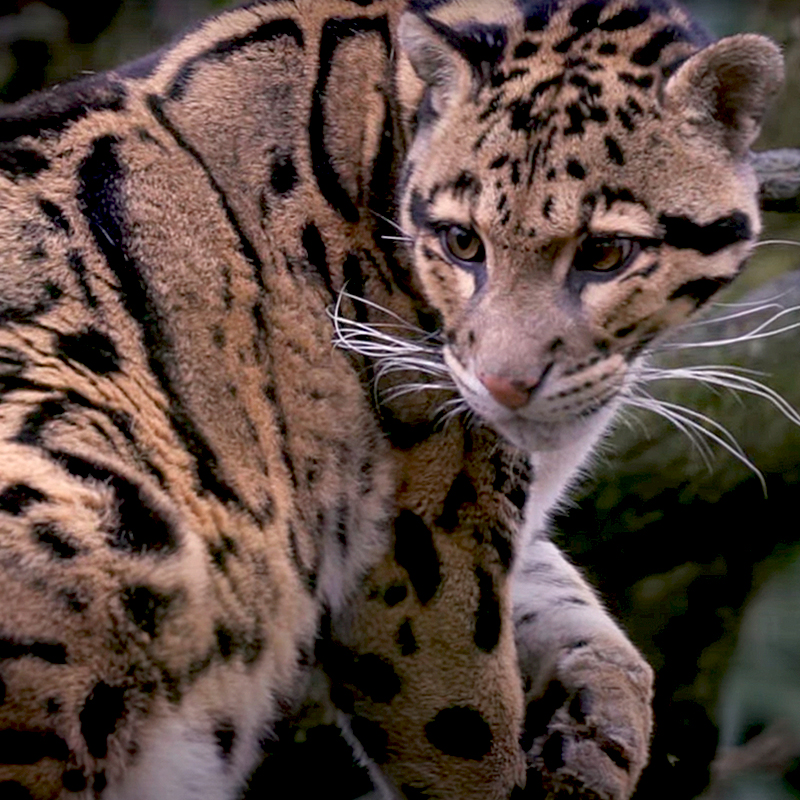
Image screnshots via YouTube
Clouded Leopards and Sabertooth Cats
Clouded Leopards certainly look uber-cute. But, they have the biggest canine teeth of any wild cat for their size, reaching about two inches. Their mouths open 100 degrees as they attack prey (tigers are around 60). No, they would not make a good pet and don’t even think about it.
Possibly they go hunting mostly at night, but they are so mysterious it’s not certain. These cats have been linked to extinct sabertooth cats with similar skull features and may be the most ancient of all modern feline species.
Clouded Leopards can reach 50 pounds and three feet long. They also have a three-foot-long tail for superb balance in the trees. (The longest of any living cat in proportion to body size.)
Video about Clouded Leopards and the Sabertooth connection by Animal Logic:
Climbing Down Trees with Ease
These cats are so agile in trees that they can hang upside-down from their oversized paws. Unlike house cats, the Clouded Leopard can go down trees head-first like a squirrel. To do this, they take advantage of rotating rear ankles and feet that mould to the shape of branches. They are also able swimmers and take to the water without hesitation.
They curiously don’t purr or roar, so they can’t be classified as a true great cat or a true small cat. Despite their name, they aren’t closely related to leopards. They are also called Tree Tigers, and Mint Leopards.
Similarly, Snow Leopards are more closely related to tigers than leopards. More may be known about Snow Leopards than Clouded Leopards, but little is known about either! Like the Snow Leopard, Clouded Leopards disappear into the clouds of their natural range. Their markings also look cloud-like.
You can see a Clouded Leopard in the jungles of Borneo via WWF International below:
Disappearing Into the Clouds
While Snow Leopards live at the highest elevations on Earth, Clouded Leopards can be found in the foothills and up to 9,600 feet in the Himalayas. But both cats are so mysterious that little is known about their lives or the full extent of their ranges across Asia. There are two species of Clouded Leopards, with the Sunda species isolated in Borneo and Sumatra, first discovered in 2006!
The two species diverged 1.4 million years ago. When a land bridge submerged, the Sunda species was cut off from mainland Asia. Today, there may be about 700 left in the wild. Therefore, getting a glimpse of the Clouded Leopard or Snow Leopard in the wild remains extremely rare.
The two species:
- Neofelis nebulosa (mainland species)
- Neofelis diardi (Sunda species)
See more about the two species in the video from WildCRU below:
Protecting Clouded Leopards and All Wildlife
Like other big cats, they face threats from:
- Poachers
- Human encroachment
- Deforestation
- Habitat loss
- Plantations such as for palm oil
- Illegal pet trade
- Hunters killing them for meat and pelts.
Tigers, Orangutans, and Clouded Leopards are all threatened by deforestation caused by the palm oil industry. While these animals could live in selectively logged forests, cutting them all down leaves them animals with no home at all. It’s simply unconscionable and evil. Not to mention, destroying biodiversity also irreversibly harms our own species in the long-run. Surely, people can do better than this?
Left to try to survive in a plantation, all wildlife is more vulnerable to poachers and hunters from all sides. Their prey species are similarly left to struggle and disappear.
Conservationists hope that a compromise like “wildlife friendly farming” could leave untouched corridors of trees for wildlife crossing through the plantations. The concept is similar to what conservationists are doing in Los Angeles, building a wildlife crossing for Mountain Lions. Only in that case, it’s providing a corridor across lanes of busy highways and urban sprawl instead of palm oil trees.
If people collectively take action, we could avoid losing Clouded Leopards and so many other species before we even have a chance to understand them. The world is incalculably more beautiful and magical with these cats in it.
Can the world decide to respect, protect, and set aside ample room for wildlife before it’s too late? If it was up to us, it would happen everywhere right now – today! See our article about Snow Leopards for an example of how this is taking place in one remote location in the Himalayas.

Image via Facebook/Big Cat Rescue


